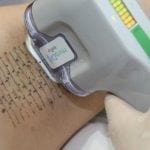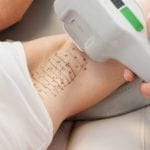Intense Pulse Light (IPL)
Intense pulsed light (IPL) differs from lasers because the light is not monochromatic, or one single colour. Instead, it simply uses intense bursts of white light, which can be applied to the skin and used in a number of cosmetic procedures. One of its most popular uses is in the lasting reduction of bodily hair, although it is becoming more widely available for a number of other treatments too. It is currently being introduced as an alternative to laser therapy in the removal of skin blemishes such as rosacea, birth marks and sun damage.
IPL treatment is suitable for the majority of people, although practitioners must ensure that patients are not taking any medications that make them more sensitive to sunlight, such as a number of antibiotics. As with laser therapy, IPL works best on skin that is pale, while the hair should ideally be dark. This provides the greatest contrast, and reduces the chance of skin depigmentation, which is a risk in those with darker skin.
Treatment sessions are usually spaced approximately a month apart, although there are currently no regulations about this, and you will be advised by your practitioner. Up to twelve treatments may be needed in order to achieve the results you are looking for, so this is not a quick process. IPL should not be painful, although a tingling sensation may be felt during the procedure itself. If anything stronger than this occurs, then you should tell your practitioner immediately, as there is a risk of burning when using either IPL or laser therapy.
*Individual results may vary




